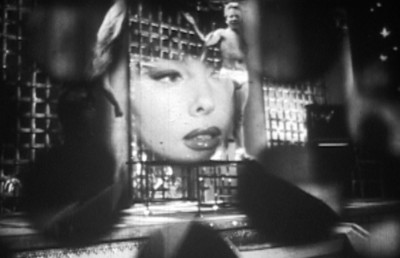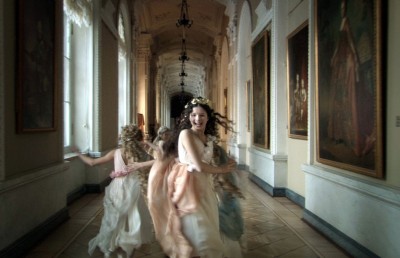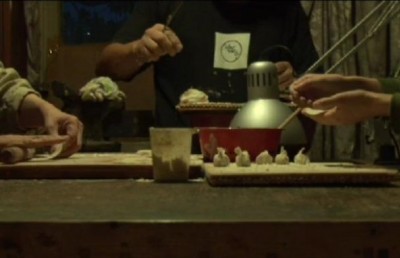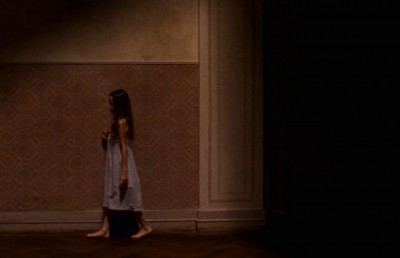Amer: The Three Faces of Ana
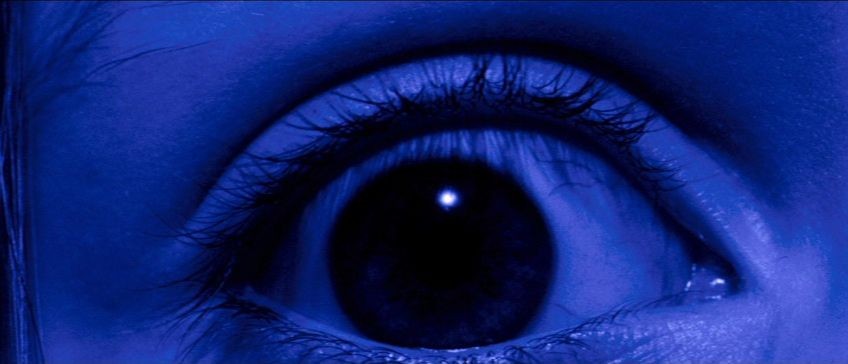

My favorite film at this year’s (2009) Festival of New Cinema was, by far, Amer, by short film experts Hélène Cattet and Bruno Forzani. Amer represents the first feature film for the Belgian co-writers, co-directors Hélène Cattet and Bruno Forzani, and one of the most audacious debuts in recent memory. Montrealers will be familiar with their work thanks to Fantasia, which has always supported their rigorous, experimental-narrative short films by presenting all of their shorts over the years. These include Catharsis (2001), Chambre Jaune (2002), La Fin de notre amour (2003), L’étrange portrait de la dame ne jaune (2004), and Santos Palace (2006). Unlike most indie filmmakers who shoot on digital, each of these short films, as well as Amer, was shot on 35mm, something which speaks to the importance that Cattet and Forzani place on film form and texture. Cattet and Forzani are huge, self-professed fanatics of the Italian giallo (in particular) and Italian Eurohorror and the Italian 1970s popular filone (horror, gangster, spaghetti western). But perhaps more importantly, they are also died in the wool formalists, which is why anyone expecting a traditional giallo will be disappointed; but most giallo fans I know of are sophisticated and respond to (and actually seek out) works that challenge on the formal and thematic level. So that as heavily steeped as Amer is in classic gialli sound and imagery (or how lavishly painted in gialli imagery it is may be a better turn of phrase), there is no giallo that I know of that has as much disdain for narrative protocol as Amer; has as little dialogue as Amer (all the dialogue can fit onto a napkin); uses the close-up as much; or pays as much painstaking attention to sound-image design. In short, Amer is a glorious, unabashed formalist experimentation in gialli lexicon (removing the unnecessary, the plot, for all the good stuff).
Amer is, of course, deeply entrenched in the iconography of the Italian popular cinema of the 1960s, 1970s, mainly the giallo, but also horror and a smattering of the spaghetti western. The intertextual references come thick and fast in the first section. The key touchstones are Argento’s Suspiria and Mario Bava’s two seminal gialli, La ragazza che sapeva troppo (The Girl Who Knew Too Much, 1963) and Sei donne per l’assassino (Blood and Black Lace, 1964) and his supernatural masterpiece Il tre volti dell paura (Black Sabbath, 1963), whose episode “The Drop of Water” perhaps provides the single greatest source of inspiration. In “The Drop of Water” a nurse steals a ring from the corpse of the old woman she was caring for and, upon returning home, is haunted by the corpse’s spirit. Bava once famously said, “All I need to make a horror film is a camera, some lights, a room, and a woman,” and this becomes a mantra for Cattet and Forzani in the first (mainly) and third parts of their film. The hyper-nonrealist use of colors, with shots bathed in surrealist, comic book saturated blues and reds, strongly identified with Bava and Argento is used judiciously by Cattet and Forzani. An expression used more often is the roaming camera frequently employed by Bava and Argento to create suspense, mystery and invoke psycho-sexual energy. In the giallo music is rarely something that remains in the background or is slavishly aligned with story or mood. It is often bold and loud and used to counterpoint the visuals (like the way Ennio Morricone’s melancholic musical motifs accompany violent imagery). The way that gialli aggressively uses music to often generate its own aural expressions, along with its normal function of underscoring thematic and narrative meaning, is perhaps where Amer is most indebted to the gialli. The music is used strategically too, as it enters into the film only during exterior scenes, which echoes the opening up of space, and its absence in the interior scenes adds to the sense of danger and claustrophobia. And in keeping with its revisionist methods, of the sourced music that Cattet and Forzani use only one comes from a giallo, La Coda dello Scorpione scored by Bruno Nicolai, the others coming from Italian crime films (although the composers, Stelvio Cipriani and Ennio Morricone are identified with the gialli too). The films are: Un Uomu Si E’ Dimesso (1971, Morricone), La Polizia Sta A Guardare (1973, Cipriani), La Polizia Chiede Aiuto (1974, Cipriani), La Polizia Ha La Mani Legate (1975, Cipriani).
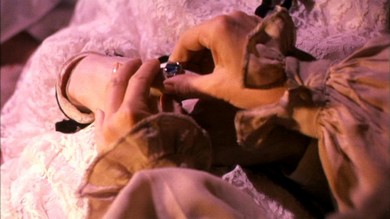
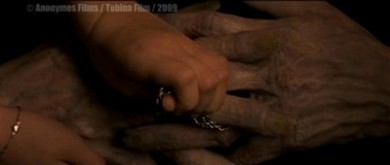
Ana 1: The Power and Danger of Looking
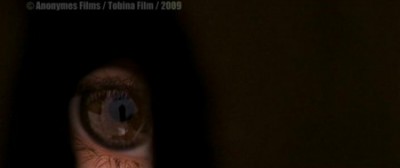
Borrowing from one of the film’s touchstones, Mario Bava’s three-story omnibus I tre volti della paura??/??Black Sabbath (1963), Amer is fragmented into three fairly equal parts of roughly 28, 17, and 40 minutes each, which are at once distinct yet integrated into the structural whole. In its simplified form (since the film’s form is anything but simplistic), the film tells the story of a female named Ana at three points in her life, as a young girl of about 7 or 8 (played by Cassandra Forêt ), as an adolescent teen (played by Charlotte Eugène Guibbaud ), and as an adult woman (played by Marie Bos). In the first part, which establishes the baroque chateau setting of the first and third stories, a young Ana spends her time scurrying about the solemn interiors playing a solitary game of hide and seek from her mother (played by Joe D’Amato’s daughter, Bianca Maria D’Amato) and father (played by Jean-Michel Vovk), which includes spying on them during sex, eavesdropping on the corpse of her grandfather (Bernard Marbaix), who is layed out ritualistically on a bed, and feeling threatened by a mysterious woman in black veil (the grandmother in mourning?). Ana steals a family heirloom from the dead grandfather’s clasped hands (as the nursemaid did with a ring in “The Drop of Water”) and then allows her vivid imagination (and perhaps her sense of Catholic guilt, suggested by the forceful presence of a cross during her steal of the heirloom) to haunt her young mind.
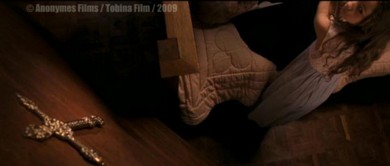
For the final minutes of the first section little Ana is chased by the black veiled woman, whose unnatural breathing (Suspiria) and quickly glimpsed talon foot suggests a monstrous demon, and her deceased, zombie-like grandfather. The surreal color design gives way to realistic lighting as Ana’s parents enter the room and snap her out of her fantasy.
Ana 2: The Power in Being Looked At
Ana’s transformation to her adolescent self begins at the end of the scene above with distorted close-ups of her child face and abdomen, giving way to close-ups of more developed breasts and concluding on an extreme close-up of the adolescent Ana’s eyes. The adolescent Ana’s coming of sexual age is instantly marked by close-ups of a Daliesque ant scurrying across her abdomen and under her bra, close-ups of her lips clasping a strand of hair at the corner of her mouth, culminating with her hand squishing the ant against her blood-smeared stomach.
The claustrophobia of the opening gives way to bright summer sunlight, as the story switches to a picturesque outdoor, coastal setting and Ana, now a teenager, taking a symbolically loaded walk along the beach with her mother to the town center for a visit at the beauty salon. The second segment depicts her as a beautiful teenager on the verge of sexual maturity. She is well aware of the power of her beauty, as she acknowledges the off-screen male gazes and takes pleasure in her new found powers of sexual allure.

The scene is pure sensuality and sexuality through film form. Cattet and Forzani’s camera loves Guibbaud’s body, especially her face, eyes, and full lips, and the way her mouth stubbornly clings to the single strand hair, and the way the wind blows at her skirt, giving tantalizingly snippets of her upper legs and panties. The bouncy, joyous music (as all of the music, culled from original Italian 1970s film sources) is full blown and up front and center adding a celebratory feel to the teenager’s sexual ‘coming out.’ Where the first part was all about the young girl’s pleasure in looking, her voyeurism, and the joy of ‘learning’ through sight, the second part deals with the pleasure in being looked at. The voyeur turned exhibitionist. In one striking close-up which only frames one of Ana’s eyes, she looks like a wild mare.
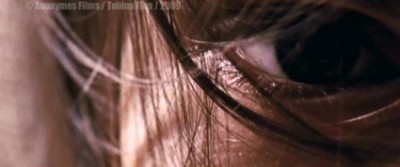
The use of the natural coastal setting, with the sound of water cresting against the shore used to underscore her ‘natural’ sexual coming of age, recalls the opening segment of Walerian Borowczyk’s Immoral Tales (1974), “The Tides,” but also the beach flashback in Argento’s Tenebrae (1982), which plays out a traumatic moment of sexual emasculation that is at the core of the killer’s psychosis. Throughout this section Ana devours the many male gazes she is subjected to –a man by the beach, a man driving by in a car, a storekeeper, a young boy, and a group of bikers. An innocent chase by Ana and the boy after an errand soccer ball (football for you non-North American readers) becomes, as most everything in the film, a sexually charged moment through a hyper-stylization of lighting (saturated bright whites), sound (constantly whirring wind, heavy breathing), camera movement (stroboscopic), and editing (metric); but the chase ends up being merely foreplay (after all, it’s only a boy), for the slow walk Ana takes pass a group of sweaty, muscular, handsome, leering bikers. The walk is ‘interrupted’ by a slap from her disapproving (or is that jealous?) mother, to which she responds with a near comical sneer. The ‘slap’ represents the culmination of a scene imbued with a sense of sexual pleasure so strong that it turns to pain, to what Lacan called jouissance. The second section ends on an appropriate air of finality: a close-up of the steel gate to the villa compound clanking shut.
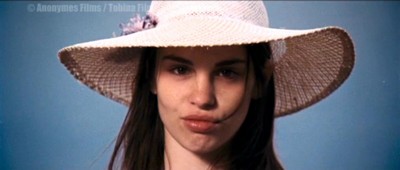
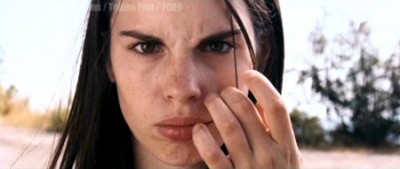
Ana 3: The Danger of Looking at Oneself
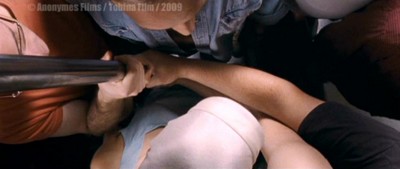
The transformation to the third section, and Ana’s adult self, is again triggered by another montage of abstract close-ups. The whereabouts of the new location is foreshadowed by the sounds of a subway which are overlaid onto the montage of close-ups. Ana is introduced in the crowded subway car through an aerial overhead shot. The location shift to a crowded public space is disorienting in its stark contrast to the tranquil, isolated locales of the first two parts (the subway is also an uncommon location for the giallo). Ana is dressed in a form fitting light blue dress and white headscarf. In the tight confines of the subway car, her lithe body becomes subjected (or willingly exposed to) a series of anonymous bodies pressed up against hers, evoking her sexuality once again. Her cab ride back to the opening section’s chateau is as sexually laden as her walk to the town square in the second section. The cab is driven by a leering, leather-jacketed, black-leather-gloved Harry Cleven, who spends as much time peeping into his rear view mirror as the road ahead (no doubt an homage to the opening cab ride scene from Suspiria, which also features a surly cab driver). Suffering the intemperate heat, Ana insists that he open her window, which lets in unnatural gusts of wind that blow away at her headscarf and dress. Ana, the closeted exhibitionist, fantasizes the wind tearing open her jacket and shirt, exposing herself to the hungry eyes of the all-too willing cab driver. Once at the chateau, the place of her childhood primal scene, she encounters the spectres of her troubled mind. Her slow walk to the villa’s front door is treated with the detailed care of an arabesque, with subjective shots through branches, sensual camera movements, extreme close-ups of thorns dragging across her shoulder, all underscored by a melancholic musical motif. Once inside, the chateau appears changed from the opening, showing the residue of neglect and decay. The air is filled with the perennial squeaking of a window shutter, a sound that recalls the swinging sign in the opening of Sei donne per l’assassino. Ana is attacked in her bathtub (another reference to Sei donne per l’assassino).
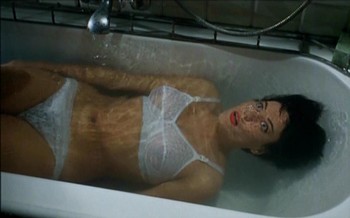
More so than in the first two sections, Cattet and Forzani manipulate reality through elliptical editing, leaving out the pertinent information that would identify the nature of Ana’s threats and attacks. For example, in the bathtub attack scene we see her running the twines of a comb against her body, moments before she is attacked and nearly drowned under the bathwater. A few seconds after the narrow escape from death we see her standing on the veranda, relaxed and eating a snack. In the next shot a subjective POV shot tracks toward her bed and a black-gloved hand enters the frame and begins to caress her sleeping body. Her eyes open, but her reaction does not acknowledge the presence of the gloved intruder. Instead she gets up and discovers razor like cuts all along her legs. Did someone cut her while she was asleep, or are the cuts self-inflicted, perhaps by the comb? The answer seems to be provided in the next scene, where we see the cab driver who drove her to the villa snooping around the villa grounds, brandishing a knife. But the form suggests another reading. For starters, the appearance of the cab driver coincides with a shift to all-blue lighting, which suggests a state of subjectivity. We see a close-up of a straight razor being run through Ana’s clenched teeth; but the cab driver was seen carrying a pocket knife, not a razor. And then Ana turns from victim to aggressor, donning the iconic black gloves and sadistically slashing the cab driver (in big close-ups) across the mouth, face, and eyes (the extremely graphic, uncomfortable close-ups of the eyes and mouth being cut recalls the tarantula and snail attacks from Lucio Fulci’s The Beyond 1980 and Aenigma, 1987). After apparently killing her assailant, Ana wakes up lying next to a pool of blood. She removes her black gloves and sinks to the bathroom floor, only to look back up and see an imposing black figure hovering above her. However, the cut to her extreme low angle point of view frames the figure outside in the front of the house, producing an irrational shot counter shot of contiguous interior/exterior space. Kuleshovian creative geography used against itself!
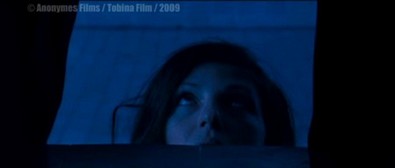
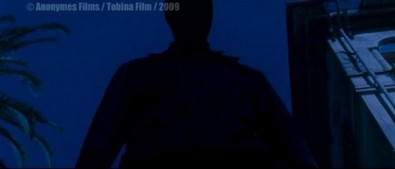
From this point on the film dreams on in Ana’s pure subjectivity, giving visual truth to an Ouroboros-like chase through the woods between Ana and her externalized giallo-clad (black from head to foot) killer (perhaps indebted to the similar ‘chase’ that opens and closes Haute tension , 2003). At the end of the chase Ana thrusts her knife into her assailant. Recalling that the Ouroboros is the ancient symbol of a snake eating its own tail, Ana’s act of ‘self-defence’ is an act of ‘self-infliction,’ a suicide. Her death (real or perhaps imagined, as suggested by the final frames of the film) at her own hands is only fitting in a genre where the killer is often female (The Bird with the Crystal Plumage, 1970, Four Flies on Grey Velvet, 1971, The House With the Windows that Laugh, 1976, Deep Red, 1975, Blood and Black Lace, which features a male and female killer, to name only a few).
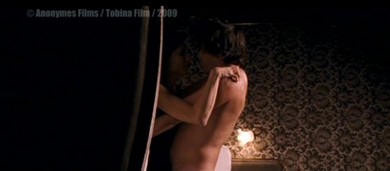
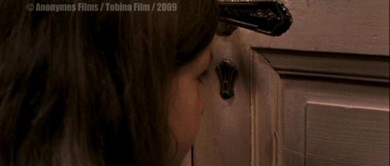
The three sections portray three stages in the life of a woman: the first depicts her as an inquisitive, forever spying young girl. Thematically, it sets up the young girl as a voyeur, forever looking through peepholes, and spying on her mother and father having sex (invoking Freud’s infamous ‘primal scene’). The fusion of sex (the primal scene) with death (the corpse of the grandfather) cements the sort of sexualized violence so strongly identified with the giallo, and establishes the adult woman’s encounter with her violent psycho-sexual fantasies in the third and final section (a type of formalist ‘character development’). The second segment depicts her as a beautiful teenager on the verge of sexual maturity; and the third section has the character an adult, thirty something woman returning to her native primal scene to conclude her psycho-sexual journey. Director’s Cattet and Forzani play out the film’s thematic discourse on the act of looking with great precision and logic. The act of looking evolves across the three sections: in the first section Ana-the-voyeur looks at others; in the second section, Ana-the-exhibitionist is looked at; the act of looking is taken to its twisted logical conclusion in the third and final section, by having Ana look at herself (she imagines being chased by a fantasy killer). In the final coda, where we see Ana laid out, apparently dead, on a morgue table, you could argue that the theme of looking is redirected for a final time. The amazing coda also serves to summarize the gialli-themed idea of sex and death (not necessarily necrophilia, but the fusion of sexualized violence that so informs the gialli). Ana, the film’s heroine lies dead on a morgue slab (the blue lighting adds to the death imagery). In stark, vivid close-ups a hand begins to wash and prepare her dead body, applying lipstick, shifting her body’s position on the table; the caresses become sexual, or so it seems, as Ana’s body arches upward, as if in the throes of sexual passion (echoing a shot of Ana’s mother during the primal sex scene), and her nipples very visibly erect.
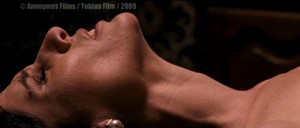
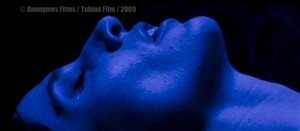
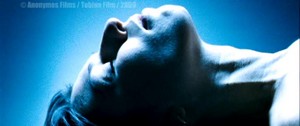
During the final overhead angle close-up of her bluish face, warm color slowly seeps back into her face, suggesting life, and a split fraction of a second before the film cuts to its end black title card, we catch a glimpse of her eyes opening, shifting the onus of the final gaze right back on us, the audience, leaving us, like Ana, in the comfort of our own darkness.
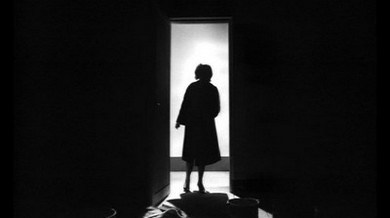
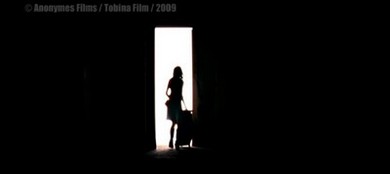
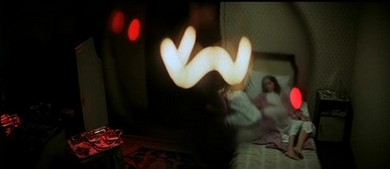
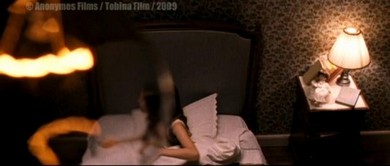
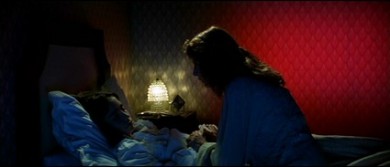
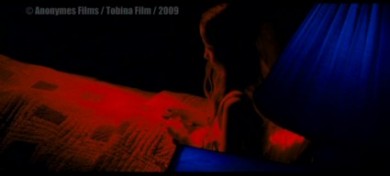
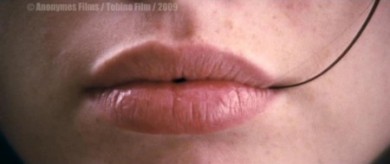
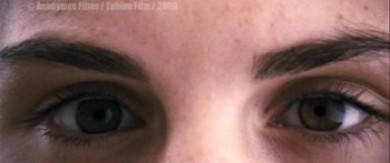
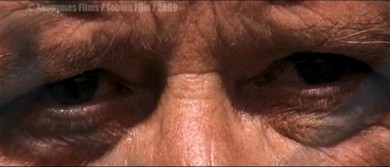
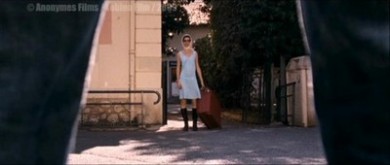
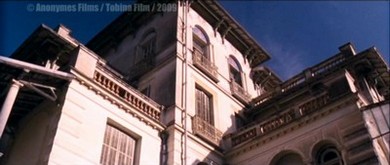
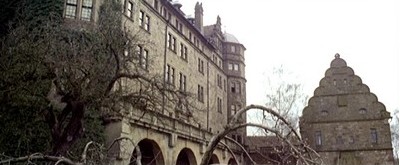
Click here for interview with Hélène Cattet and Bruno Forzani, “Amer: The Ruins of the Giallo.”



